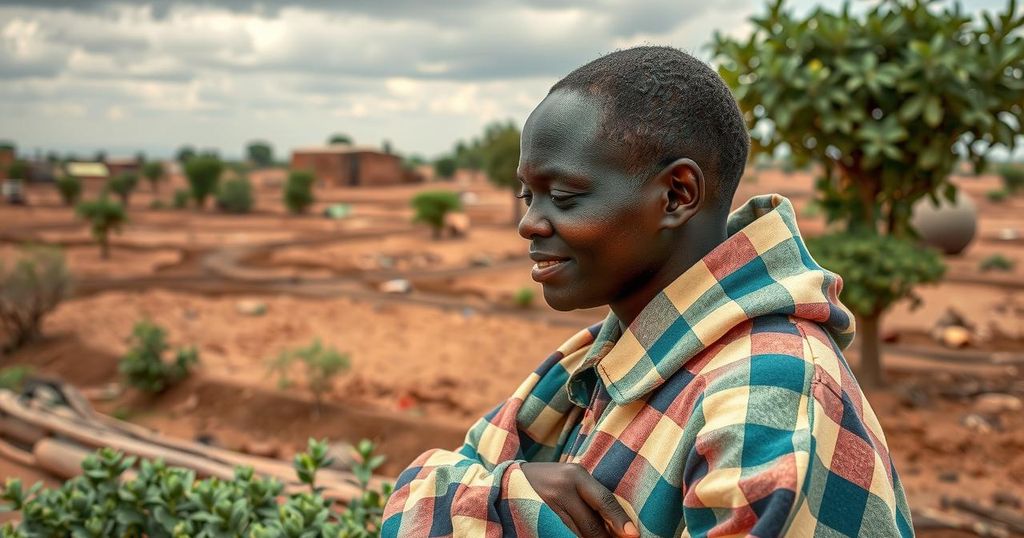Sudan’s Critical Crisis: The Intersection of War and Climate Change

Sudan is facing a dual crisis of war and climate change, with over 20,000 deaths and millions displaced. Flooding has significantly impacted refugee camps, aggravating the humanitarian situation. Urgent calls for integrating climate considerations into humanitarian aid efforts are being emphasized as critical for effective intervention.
Residents of Sudan are grappling with the dire consequences of enduring warfare and the exacerbation of climate change, approaching a two-year anniversary of turmoil. The conflict between the Sudanese Army and paramilitary Rapid Support Forces has forced millions to abandon their homes and has resulted in over 20,000 fatalities. Those already susceptible to climate repercussions are particularly vulnerable, with many displaced within regions severely affected by flooding.
As an observer noted, “The war has created more than 12 million refugees and IDPs. Floods have submerged many camps, with the total flooded area larger than Germany. Sudan is now facing its worst-ever humanitarian crisis.” As calls for immediate humanitarian efforts rise, there is a pressing need for strategies that integrate climate considerations into aid planning. An activist emphasized, “We must consider climate change when planning humanitarian interventions. Making aid climate-sensitive is no longer a privilege—it’s essential. Otherwise, efforts will be washed away by the floods.”
Sudan’s susceptibility to climate change is compounded by frequent droughts and unpredictable weather patterns, as stated by the United Nations. The overlapping crises have left millions in urgent need of assistance, necessitating comprehensive solutions that address both immediate humanitarian needs and the long-term implications of climate challenges.
Sudan is currently enduring a multifaceted crisis defined by ongoing violence and significant climate change impacts. The conflict has displaced millions, while natural disasters such as severe flooding have aggravated the humanitarian situation. Climate change disproportionately affects vulnerable populations, which are particularly susceptible to the dual threats of war and extreme weather events. Understanding these interrelated issues is crucial to developing effective humanitarian responses.
In summary, the plight faced by Sudanese residents illustrates the intersection of armed conflict and climate change. As millions of people suffer due to the ongoing war and environmental catastrophes, it is imperative that humanitarian efforts are designed to be adaptive to climatic conditions. Acknowledging the primary needs of both refugees and internally displaced persons will facilitate a more effective response to this unprecedented humanitarian crisis.
Original Source: shiawaves.com






